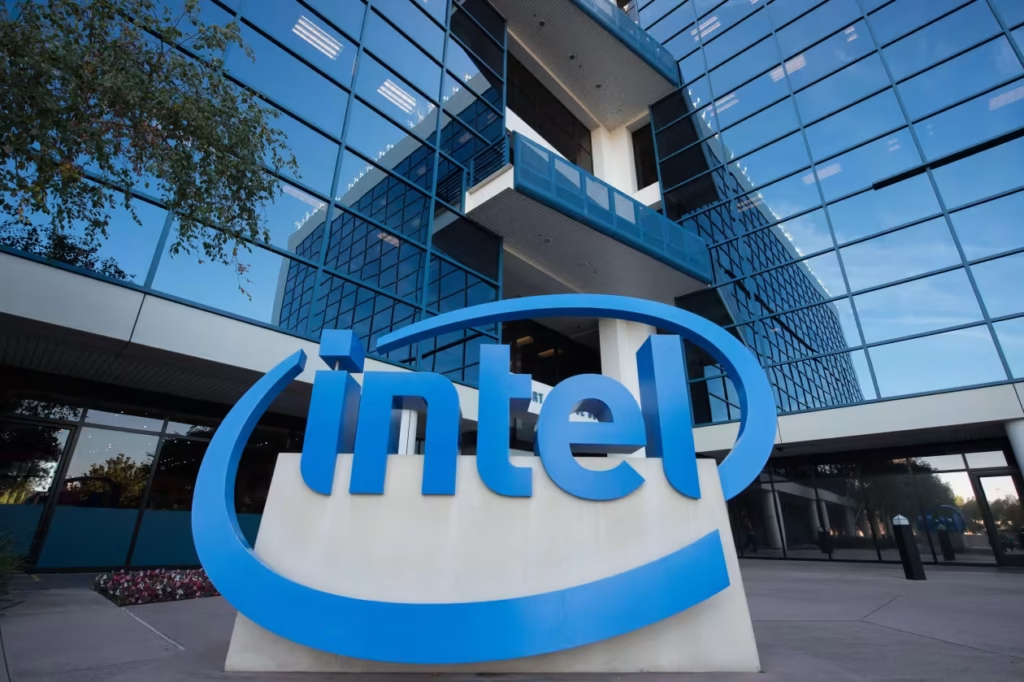Following news that AMD might become a customer for Intel’s foundry, the company’s stock rose 7.1% on Wednesday.
Advanced Micro Devices Inc. and Intel Corp. are competitors and possibly future partners.
According to unnamed persons familiar with the situation, Semafor reported on Wednesday that the chip giants are in the early stages of talks about AMD (AMD) possibly becoming a customer for Intel’s (INTC) foundry business. It’s unclear how much manufacturing Intel would provide to AMD in a hypothetical cooperation, and there’s no assurance the two companies will proceed with an agreement.
AMD would be the most recent industry opponent to join forces with Intel, which, in contrast to many of its rivals, continues to produce chips. However, Intel has issued a warning that it may have to cease operations if it is unable to secure a sizable external client for its next-generation 14A processing node.
Following the revelation, Intel’s shares increased, closing Wednesday at a 7.1% gain.
Intel’s future was once questioned by analysts and investors, but following a number of recently announced agreements, Wall Street appears to be feeling a little more optimistic now. Over the year, Intel’s stock has increased by about 80%.
Nevertheless, Stacy Rasgon, an analyst at Bernstein, was not quite certain that AMD and Intel would decide to collaborate.
“AMD and Intel appear to be much starker competitors than Nvidia and Intel in their current core markets, and we find it unlikely that either would really want to rely on the other, at least for now, and we would think that a push for more U.S.-based manufacturing of AMD’s parts would be much more easily satisfied through TSMC Arizona,” he wrote in a client note.
According to Dow Jones Market Data, this month’s announcement by Nvidia Corp. (NVDA) of a collaboration to design and produce semiconductors with Intel helped Intel’s stock book jump 23%, the most in a single day since October 1987. Additionally, Nvidia said that it would invest $5 billion in Intel’s common stock. According to Semafor, it was unclear if AMD would attempt to partner on manufacturing or invest.
The partnership with Nvidia came after Intel agreed to offer the U.S. government a 10% share in the business in August.
AMD did not immediately reply to a request for comment on Wednesday, and Intel declined to comment.
According to Semafor, Intel is unable to produce AMD’s most sophisticated chips, yet it is in dire need of a foundry customer. According to analysts, Intel and Nvidia’s collaboration is currently solely product-focused.
According to Bloomberg News, Intel has reportedly made an investment request to Apple Inc. (AAPL) and the two businesses have had preliminary discussions about collaborating.
Prior to this, Gil Luria of D.A. Davidson told MarketWatch that, with backing from Nvidia and the U.S. government, Apple could help Intel “establish its future as the key provider of semi fabrication in the U.S.”
“Before the U.S. got involved, Intel didn’t have any anchor customers for its 14A technology, which put the future of the company in doubt,” Luria stated in an email response.
According to Luria, Intel “would have the two biggest consumers of semi fabrication lined up to support its U.S. production,” with Nvidia and potentially Apple following.
Similar to Apple, AMD manufactures its most cutting-edge chips mostly in collaboration with Taiwan Semiconductor Manufacturing Co. Ltd. (TW:2330).
The Trump administration is attempting to increase chip manufacturing in the United States at the time of the alleged talks with Intel. Intel’s stock surged 6% earlier this week after the Wall Street Journal revealed that the White House is considering imposing tariffs on American companies to force them to produce the same quantity of chips that consumers are importing from overseas.





